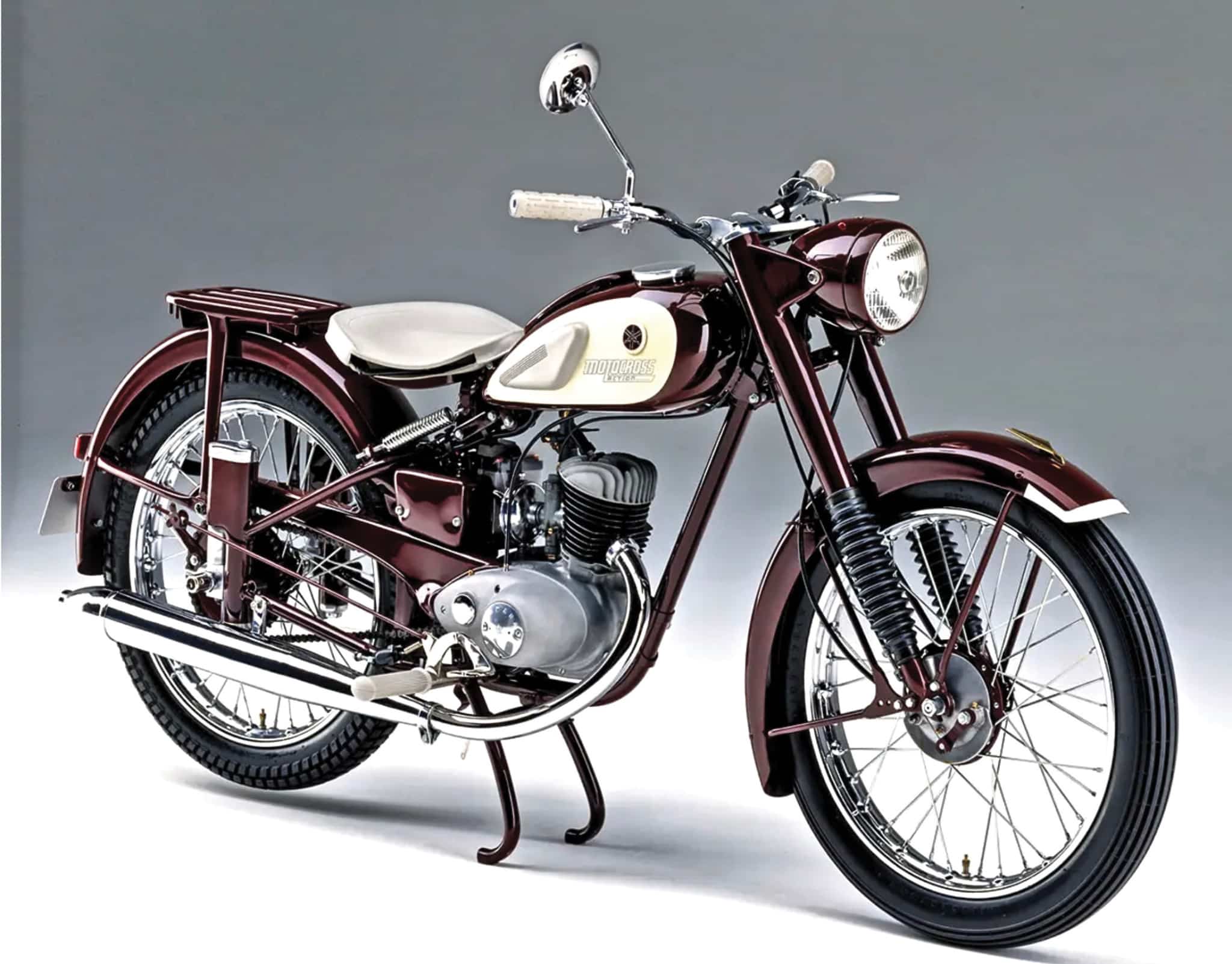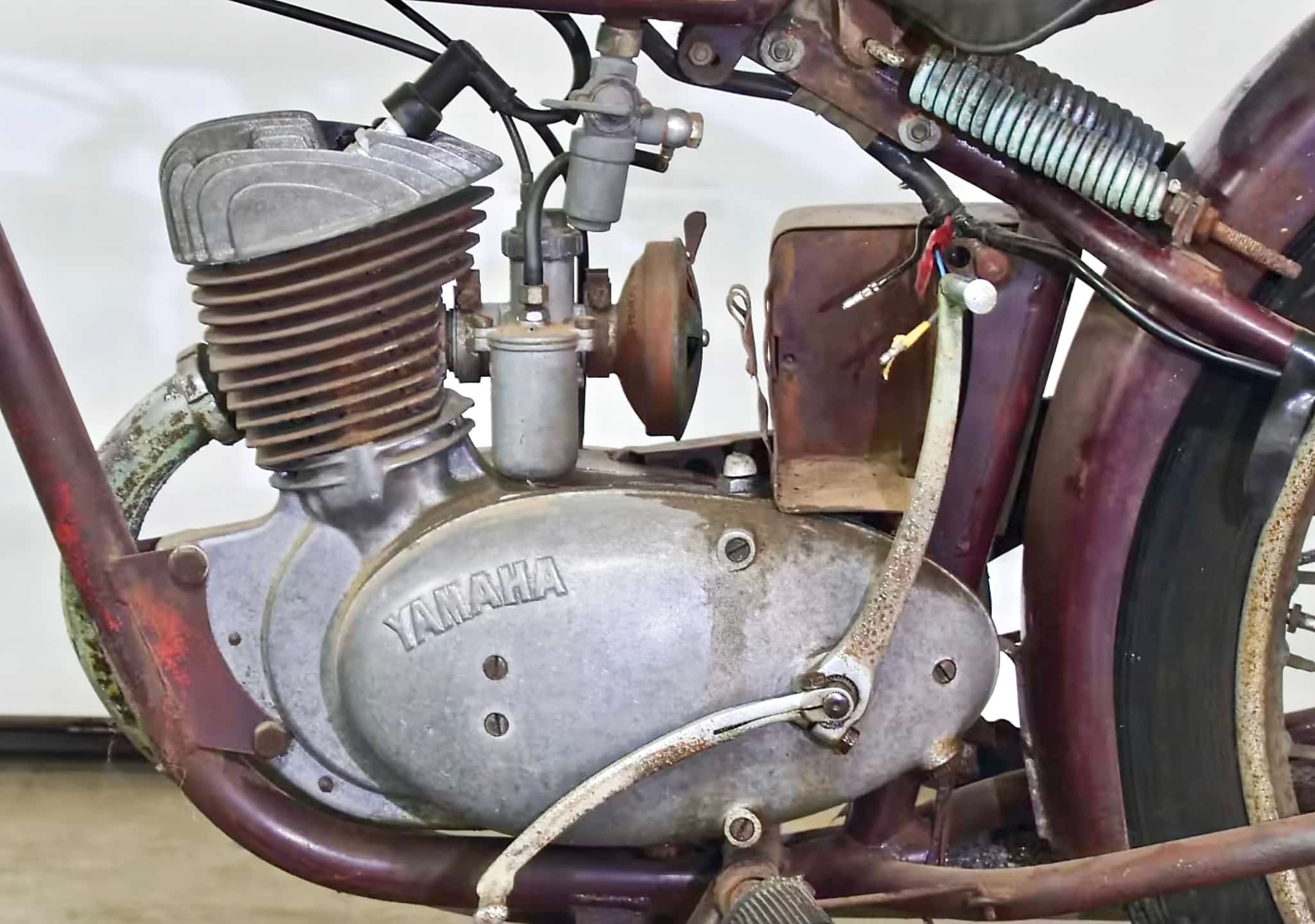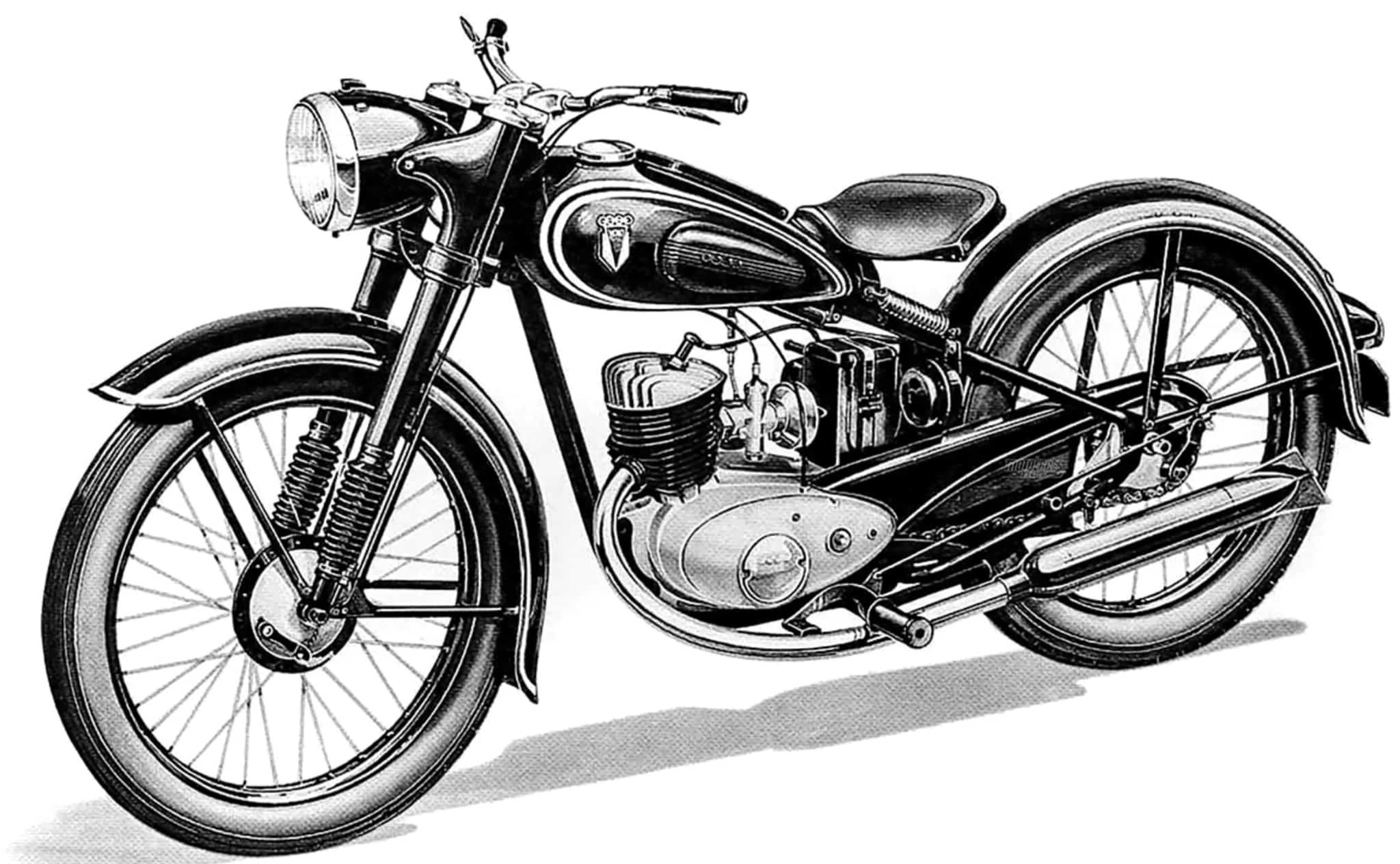HOW THE 1955 YAMAHA YA-1 RED DRAGONFLY MADE YAMAHA WHAT IT IS TODAY
IT ALL STARTED WITH A VOLCANO, A GERMAN PATENT, A HARMONICA, BRILLIANT MANAGEMENT AND A FLASHY PAINT JOB
 The chestnut red and cream colors made the Yamaha YA-1 stand out from all the other black motorcycles that the competition was building. It also earned it the “Red Dragonfly” nickname
The chestnut red and cream colors made the Yamaha YA-1 stand out from all the other black motorcycles that the competition was building. It also earned it the “Red Dragonfly” nickname
Torakusu Yamaha started building pianos in 1900, but he never saw a Yamaha motorcycle, as he passed away in 1916. His company, Nippon Gakki Seizo Kabushiki Kaisha, which translated is “Japan Musical Instrument Manufacturing Company,” drifted into building aircraft parts during the Second World War.
After the war, Nippon Gakki once again began making harmonicas and xylophones, thanks to post-war American aid. But, Nippon Gakki’s workforce included experienced engineers who were experts at machining, casting and metalwork (from their WWII output). Nippon Gakki President Genichi Kawakami decided that the company should take advantage of this skilled labor and meet the booming post-war need for cheap transportation. That meant motorcycles. Kawakami thought that a lot of post-war Japanese motorcycles were little more than scooters or motorized bicycles. Kawakami wanted to make the best motorcycle in Japan, so he asked his engineers who made the best motorcycles in the world. They told him, “The Europeans.” So, Kawakami sent the engineers to Europe to find the best motorcycle possible, and they found it in Germany.
 That is Yamaha President Genichi Kawakami on the right as he and his team of technicians get ready to ride up the Mount Asama Volcano racecourse. Genichi Kawakami started working for Yamaha in 1937, where his father, Kaichi Kawakami, had been the president since 1927. Genichi succeeded his father and introduced motorcycle production to Yamaha in 1955. He didn’t retire until 1976.
That is Yamaha President Genichi Kawakami on the right as he and his team of technicians get ready to ride up the Mount Asama Volcano racecourse. Genichi Kawakami started working for Yamaha in 1937, where his father, Kaichi Kawakami, had been the president since 1927. Genichi succeeded his father and introduced motorcycle production to Yamaha in 1955. He didn’t retire until 1976.
It was the 125cc, 3-speed, two-stroke 1949 DKW RT125. Best of all, because of Allied war reparations, Germany had to hand over many of its advanced products patent-free to anyone who wanted to make them—that included the DKW RT125. The RT125 would become the basis for Nippon Gakki’s first motorcycle.
 This is an unrestored Yamaha YA-1 two-stroke engine. It produced 5.5 horsepower in stock trim.
This is an unrestored Yamaha YA-1 two-stroke engine. It produced 5.5 horsepower in stock trim.
The prototype Yamaha YA-1 started undergoing testing in 1953. It shared the basic DKW engine design, but Nippon Gakki added a 4-speed gearbox and a geared primary drive instead of the DKW’s chain. Production began in 1955 and, in honor of Nippon Gakki’s founder, Torakusu Yamaha, the first actual production Yamaha motorcycle, the Yamaha YA-1, rolled out of the factory with a stylish chestnut red paint job. Japanese motorcycle enthusiasts named it the “Red Dragonfly.” By the summer of 1955, the Yamaha Motor Company was spun off from the music business of Nippon Gakki.
The 1955 Yamaha YA-1 had a telescopic fork and plunger rear suspension. In honor of their musical instrument heritage, they added enamel badges on each side of the 2.5-gallon gas tank that were designed around crossed tuning forks (another nod to their musical instrument foundation).
In 1955, there were over 100 motorcycle manufacturers fighting over the Japanese market. Yamaha was just entering the motorcycle business and faced the wrath of the already established marques of Lilac, Marusha, Tohatsu, Showa, Meguro, Miyata and Honda.
To set themselves apart from their competition, Yamaha decided to enter a team of its Red Dragonflies in the Mount Asama Volcano Race—a 12.5-mile race up the shifting volcanic ash roads of a mountain situated 120 miles north of Tokyo. The fledgling Yamaha team shocked the other manufacturers by winning the Asama Volcano Race. Instant sales success! Don’t believe it? Here is the 1949 DKW RT125 that Yamaha drew more than inspiration from. It wasn’t just Yamaha, though; Harley Davidson and BSA also copied the patent-free RT125.
Don’t believe it? Here is the 1949 DKW RT125 that Yamaha drew more than inspiration from. It wasn’t just Yamaha, though; Harley Davidson and BSA also copied the patent-free RT125.
Young Japanese riders flocked to buy the YA-1 “Red Dragonfly.” Red Dragonflies flew out of the showrooms. From a standing start, Yamaha went on to build 2,272 units in 1955, and when YA-1 production came to end in 1957, production had grown to 11,000 bikes.
At a time when motorcycle design was dominated by all-black machines, the YA-1’s simple form and chestnut red coloring attracted a catchy nickname, aided in no small part by the YA-1’s performance at the Mount Asama Volcano Race. Word of mouth made it the motorcycle to own in Japan in the mid-1950s.
The success of Yamaha is a direct result of the business acumen and bold decisions made by a handful of men who had nothing more than a war-prize patent, a talented workforce, and a desire to build the best motorcycle in Japan. They laid the groundwork for what Yamaha is today.






Comments are closed.